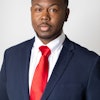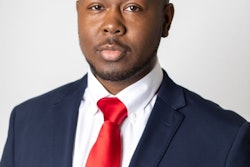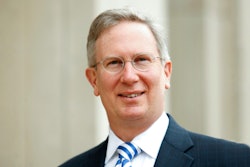Tales From the Boondocks
Recruiting Black Faculty to Small Town, U.S.A., Can Be A Challenge. But Increasingly, It Is One That Colleges Are Taking on and
Conquering
When Dr. Mordean Taylor-Archer first arrived in Manhattan, she went to the local cable provider and asked that Black Entertainment Television be added to the basic cable offerings. Taylor-Archer was not, by the way, in New York’s Big Apple, but rather in Manhattan, Kan. — in the heart of the Midwest, where few in the town of roughly 41,000 had even heard of BET.
“There are certain things that have to happen to make a place feel welcome and warm to a diverse population,” says Taylor-Archer, associate provost for diversity and dual career development at Kansas State University, who also has found herself lobbying local merchants to get Black hair-care products and make-up sold in local stores.
Preparing the campus and community for diversity, after all, is part of her job at Kansas State in an effort to attract more Black scholars to the campus of 21,543, which currently has 20 Black faculty members.
Taylor-Archer is not alone.
Administrators at campuses, small and large — from Brunswick, Maine, to Boone, N.C., to Manhattan, Kan. — are looking to cultivate a Black presence in cities with tiny minority populations. Many have a lot of research and scholarship opportunities and simple small-town charm to offer the right candidate.
In 1990, there were just two Black faculty members at Kansas State. With Taylor-Archer’s assistance, the university has increased that presence tenfold. Still, Black scholars only account for 1.3 percent of the full faculty complement of 1,500.
To maximize recruitment of faculty of color, Taylor-Archer says a university should consider two things: “The first and most important thing is that there is an institutional commitment to diversity from the president to the provost to the deans to the department heads as well as the faculty. Everyone must be on the same page and not just talking about recruitment but taking affirmative steps to make it happen.”
Once that commitment has been determined, Taylor-Archer says the next step is personal outreach. The formula worked recently when the university acquired its first African American department chair.
“Initially, I said, ‘Thanks, but no thanks,'” admits Dr. Gwen O’Neal, chair of the department of apparel, textiles and interior design at Kansas State.
She had reservations about the offer that was personally extended by the dean of the college not because of the campus’ rural location, but because she wasn’t sure she wanted to accept the challenge of being the first Black department head.
But that didn’t stop the dean of human ecology, Dr. Carole Kellett, a White administrator, from continually calling O’Neal, who was up for full professor after 13 years at Ohio State. “I first thought that she was a great candidate and I knew that we’d really like to get her,” Kellett says. “And, secondly, that if we did get her and she’s not happy in this environment, then we’d be negligent.”
Kellett, a former administrator at California State University-Long Beach, says that she is no stranger to a diverse community and being the minority, but that she has no personal insight to the perspective of a Black woman.
Yet she wanted O’Neal to draw her own conclusions about Kansas State. “I finally had to be very candid,” O’Neal says. “I told her that I didn’t think that a White faculty would want to be lead by a Black female.”
Kellett responded by inviting her to campus. It was that visit that changed O’Neal’s mind. “There was a real atmosphere of inclusion, even though there was no evidence of inclusion,” O’Neal says of the small minority presence.
To make sure that O’Neal received a true picture of life at Kansas State, Kellett footed the bill for a dinner with other African American faculty hosted by Taylor-Archer, which the dean did not attend.
“I knew what the challenges were. That was very obvious,” O’Neal says. “But everyone was very open about them and wanted to know how I would handle those challenges.”
The Strain in Maine
Dr. Eddie Glaude’s biggest challenge upon arriving at Bowdoin College’s Brunswick, Maine, campus four years ago was getting a hair cut. “I drove around like a ‘crack head,’ stopping everyone I saw to ask where the barber was,” Glaude recalls.
To date, there is one over-booked barber who cuts Black hair in Portland, Maine, the nearest urban area about a half hour from the small liberal arts college. Boston is two hours away.
Glaude, a Mississippi native and Morehouse graduate, has taken to cutting his own hair. He chose Bowdoin on the advice of his dissertation adviser and mentor while at Princeton, Cornel West .
“We thought that Bowdoin would be a good place for me to mature without the concern for the pace or pressures to perform at a larger place.”
Glaude says he has been able to make an impact on the campus, particularly among students of color — there are 36 African American students on the campus of 1,755 — without being overly burdened.
Bowdoin offers professors a two-class workload in the fall and spring terms, leaving ample time for research and writing.
“If I could be at Morehouse, I would,” Glaude says. “But they don’t pay well and then you have to teach a 4-4 or 3-4 course load.”
Glaude also says Bowdoin does its best to make faculty feel welcome. “The great thing about a small place is that when they get a serious Black scholar, they roll out the red carpet,” he says.
“The departments, in the past, basically have had a passive approach to recruitment. They sit back and wait for the applications to come in and then make their decisions,” Allen Wells, dean of academic affairs at Bowdoin, says. “But with the demand so high and supply so short for faculty of color we realized we had to be more aggressive.”
Bowdoin recently hosted a workshop for its search committee to discuss better ways to recruit faculty of color.
“What is really crucial is that they have to want to do this,” Joanna Lee, the affirmative action officer at Bates College in Lewiston, Maine, who led the workshop, says. “If the commitment is made then they will hire more faculty of color.”
Bowdoin makes contact with potential candidates through personal professional relationships or conferences and meetings and invites the best candidates to campus to meet with faculty in their departments and those interested in their field of study.
Currently, there are eight African American faculty members at Bowdoin, one is tenured, four are tenure-track and two are adjuncts. A writer-in-residence also is African American. The total faculty count is 150.
“We’ve had our good years and we’ve had not-so-good years. We still have a long way to go. But we are strongly committed to doing the best we can,” Wells says.
For instance, Bowdoin recently lost Dr. Louis Chude-Sokei to the University of California-Santa Cruz. Single, 28 years old and a recent graduate of the University of California-Los Angeles with interests in African, Caribbean and African American music, literature and culture, Chude-Sokei found Bowdoin to be a cultural wasteland.
“The environment, without question, was not for me,” Chude-Sokei, now an assistant professor of literature at U.C.-Santa Cruz, says, noting that colleagues at UCLA encouraged him to go to Bowdoin because it was the best offer and the best place for young scholars to flourish.
“It was very cold, and they wheeled out some African American students for me to meet,” he says, recalling his campus visit. “The thing about these job visits is that they often happen in hermetically sealed environments where you are the celebrity of the moment and you hear everything you want.”
Chude-Sokei says he knew nothing about Bowdoin or Maine before visiting and says his campus visit didn’t reveal how life would really be, although everyone was very enthusiastic about him being there.
It wasn’t all bad for Chude-Sokei. He says he had free reign to pursue all of his scholarly interests. But after two years at Bowdoin, he chose to move to a research university with “a larger community of cutting-edge scholarship and social engagement.”
“There are two kinds of people that this kind of environment will work for,” says Chude-Sokei. “Those that are married and have families, and traditional academics who just dig in and do the work.”
O’Neal and Glaude agree. Both are married and have families and say the social environment of their campuses had less to do with their professional choice.
“Quality of life issues are key to being productive and it can be tough if you are stuck in a place you don’t want to be,” Glaude says.
A Kansas Reel
Dr. Olga Davis says Kansas State was not a warm and positive or supportive place for her. A recent graduate from the University of Nebraska-Lincoln when she arrived, she was no stranger to being the first and only Black in the academy.
“My work was foreign to them,” says Davis who specializes in speech communications and the rhetoric of Black female slave narratives. “They didn’t know what to do with me,and I felt that I was not valued.”
Davis, now at Arizona State University, says part of the problem in her case arose because her position was created especially for her by the provost’s office. Department colleagues felt she was simply an affirmative-action hire and as a result, her work, sub-par.
“I feel that I enhanced the department, the college and the university and that my presence was transforming the academy,” Davis says. “Diversity can transform the academy for the 21st century but many Midwestern, predominately White colleges don’t get that and don’t understand.”
A Boone Swoon
Ultimately, many faculty attracted to these seemingly isolated campuses say that it was the best fit for their career at the time.
In the foothills of North Carolina, in Boone — population 13,600 — Dr. David Phoenix has found a place in Appalachian State that gave credence to a specialized area.
Upon receiving his doctorate from the University of North Carolina-Chapel Hill in healthcare management, Phoenix could only land one-year adjunct professorships, which he felt were below his talents.
“I never knew if my contract would be renewed. It put me on edge,” says Phoenix, who has been at Appalachian for 16 years.
A colleague from Chapel Hill pursued him for a position at Appalachian State. “They went all out. The salary was very commiserate and they offered me a tenure -track position,” Phoenix says. “The HBCUs and other state schools I worked for were only interested in offering non-tenure-track temporary posts.”
Phoenix says choosing a campus environment to live and work in is a very individual experience and recommends recent doctoral candidates not only look at location, but the professional opportunities.
“You should go where they make you best offer or the best deal — whether that is in Boone or wherever. You should look at the career path that’s being made available to you and go where you find people doing like research,” Phoenix says. “The best deal for a recent Black Ph.D. is not an adjunct or temporary post. You should go to a place where when you perform to standard you will be awarded tenure. It’s all that a White Ph.D. can expect, and it’s all that a Black Ph.D. should expect.”
© Copyright 2005 by DiverseEducation.com


















